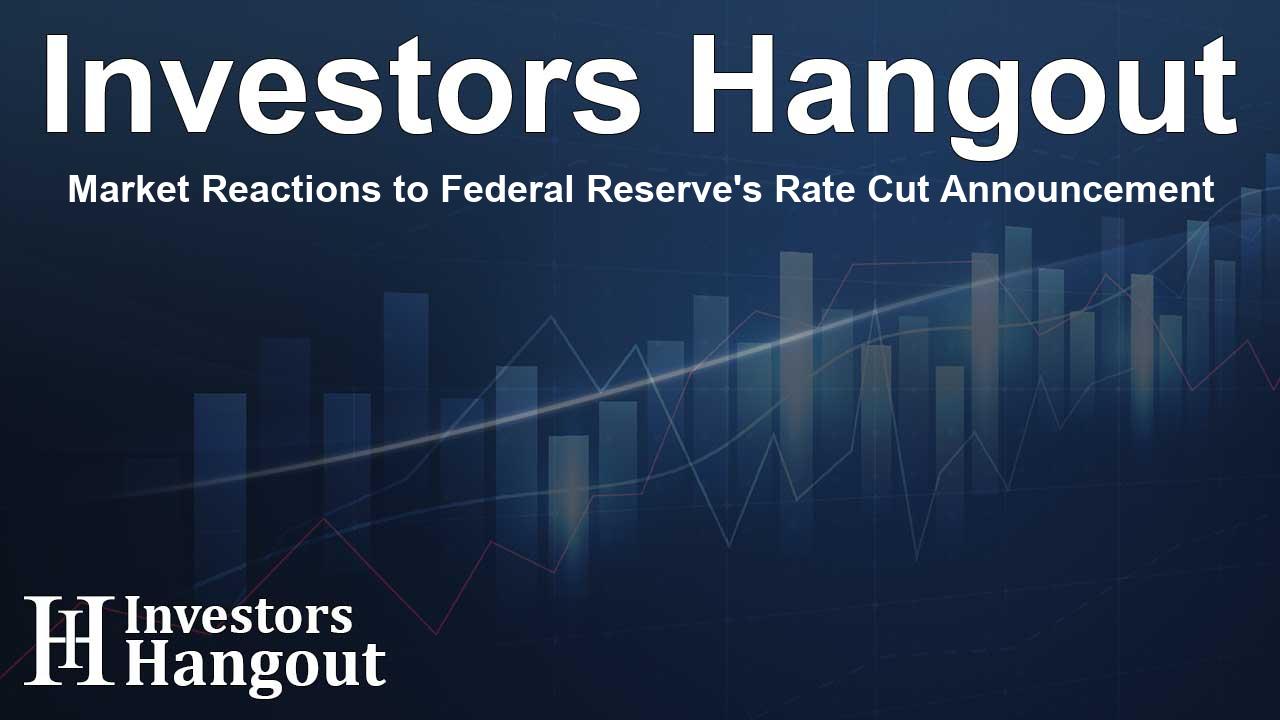Market Reactions to Federal Reserve's Rate Cut Announcement

Market Overview Following Federal Reserve's Rate Cut
Stocks experienced a noticeable uptick after the Federal Reserve made headlines with a significant announcement regarding interest rates. The central bank decided to reduce rates by 0.5% for the first time in several years, marking a pivotal shift in its monetary policy.
In conjunction with this decision, the Fed released its latest Summary of Economic Projections, indicating that many officials foresee a total interest rate reduction of 100 basis points in the current year. This news contributed to an immediate rally in the stock market.
Despite the initial surge in technology stocks, particularly the Nasdaq Composite, market stability was short-lived as some gains were quickly receded. In a similar vein, both the S&P 500 and Dow Jones Industrial Average also recorded minor downturns.
Understanding Investor Sentiment and Rate Expectations
The significant policy shift from the Fed was largely anticipated by market participants. As signs pointed to a cooling inflation rate without major detriment to the economy, investors remained divided on the extent of the cuts—speculating about whether a deeper cut of 0.5% would indeed materialize, or if the more traditional 0.25% adjustments would continue.
In the lead-up to the Fed's announcement, traders appeared to lean heavily on the possibility of a larger 50 basis point cut. As of Wednesday, data indicated a greater than 60% probability of such a move, a stark contrast to just 15% a week earlier.
The Labor Market Status and Economic Predictions
During a post-decision press conference, Fed Chair Jerome Powell expressed his confidence in the labor market's strength. Highlighting key indicators like the unemployment rate hovering around 4.2%—considered low by historical standards—he noted that wage growth was trending towards sustainability.
Powell reassured the public that the aim is to sustain robust employment levels, adhering closely to the Fed's mandate. Furthermore, recent retail sales figures have exceeded expectations, suggesting the economy is not just surviving but thriving.
Future Implications: Insights on Additional Cuts
The latest forecasts suggest further cuts are anticipated, with two more 25 basis point reductions forecasted by the end of the year. The cumulative effect of these rate adjustments is projected to foster a soft landing for the economy—one where inflation stabilizes while maintaining sufficient employment levels.
By 2025, the federal funds rate is expected to reach significantly lower levels than previously predicted. Discussions surrounding the Fed's long-term easing measures will be vital as they navigate a challenging economic landscape.
Market Reactions Following Rate Cuts
Market analysts note that while immediate reactions tend to appear optimistic following such interest rate cuts, sustained growth is contingent upon ongoing economic recovery. Historical data indicates that similar situations have often resulted in positive market trends, encouraging optimism among investors.
Potential Risks Ahead for the Economy
Despite the positive context, some risks linger. Monitoring labor market conditions is paramount as every economic indicator could signal changes in policy direction. The Fed's commitment to reducing rates in the near term will become increasingly significant in determining overall market health.
Frequently Asked Questions
What was the recent interest rate change by the Federal Reserve?
The Federal Reserve cut interest rates by 0.5%, marking the first reduction since 2020.
How do rate cuts impact the stock market?
Rate cuts typically lead to increased market activity as lower borrowing costs boost investment and consumer spending, often resulting in stock price rallies.
What are the implications of future interest rate cuts?
Future cuts may further invigorate the economy, potentially bolstering market performance while maintaining essential employment levels.
What is the current state of the labor market?
The labor market remains solid with an unemployment rate around 4.2%, but it requires close monitoring to understand its evolution.
How have previous interest rate reductions historically affected markets?
Historically, markets have responded positively to rate cuts, often resulting in sustained growth over the following year.
About The Author
Contact Evelyn Baker privately here. Or send an email with ATTN: Evelyn Baker as the subject to contact@investorshangout.com.
About Investors Hangout
Investors Hangout is a leading online stock forum for financial discussion and learning, offering a wide range of free tools and resources. It draws in traders of all levels, who exchange market knowledge, investigate trading tactics, and keep an eye on industry developments in real time. Featuring financial articles, stock message boards, quotes, charts, company profiles, and live news updates. Through cooperative learning and a wealth of informational resources, it helps users from novices creating their first portfolios to experts honing their techniques. Join Investors Hangout today: https://investorshangout.com/
The content of this article is based on factual, publicly available information and does not represent legal, financial, or investment advice. Investors Hangout does not offer financial advice, and the author is not a licensed financial advisor. Consult a qualified advisor before making any financial or investment decisions based on this article. This article should not be considered advice to purchase, sell, or hold any securities or other investments. If any of the material provided here is inaccurate, please contact us for corrections.
